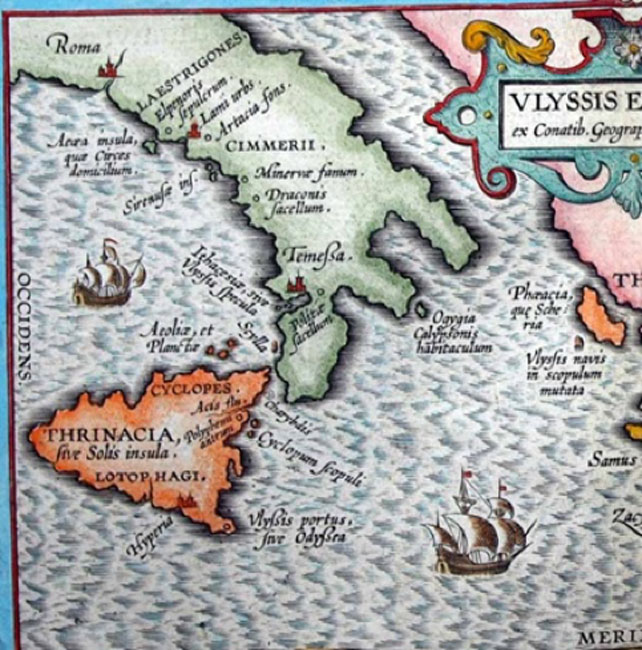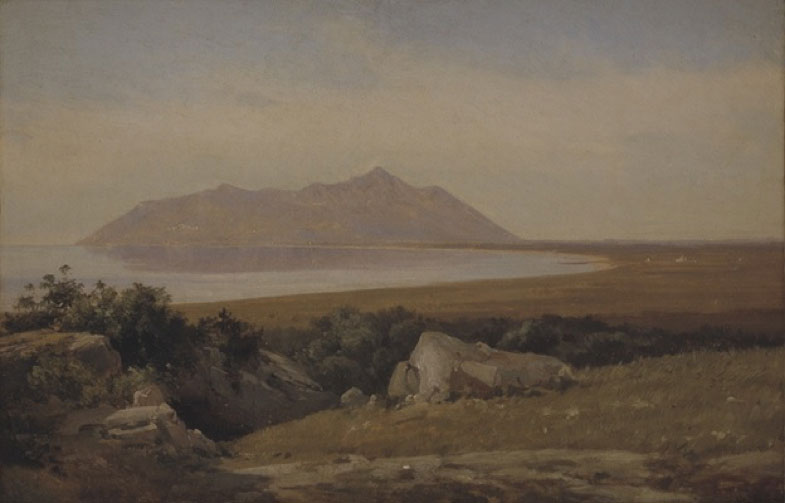
Searching for the Lost Location of the Isle of Circe, Enchantress of Odysseus
"They breathe slight auras into the night
while the moon shines in the sky, and everything
Under the tremulous light the sea sparks.
They then shave the nearby coasts
of the land of Circe, where the rich
daughter of the Sun, to her perpetual song,
"makes the opaque woods ring out..." (Virgil, Aeneid, VII, 10-16)
It was by chance that Homer’s brave Odysseus, on his odyssey home from the Trojan War, landed on the mysterious Isle of Circe, " the cruel Circe [who] in whales and terns of beasts turned with his evils,” the witch that enchanted him and turned his men into swine. Many researchers and authors have endeavored to find the exact location of the island of Circe – the Greek name Aiaia - on the Italian coast. Dr Roberto Volterri, author, has had the opportunity to often and thoroughly explore in the region of Lower Lazio, the area of San Felice Circeo, to search from an archaeological and historical perspective, if this may be the lost location of Circe’s island.

Tarquinius Superbus by Lawrence Alma-Tadema, depicting the king receiving a laurel; the poppies in the foreground refer to the "tall poppy" allegory (Public Domain)
Historical Circeii and Modern-day San Felice Circeo
The modern village of San Felice Circeo is built over the site of the ancient town, Circeii, the citadel which stood on the top of Mount Circeo, a promontory located on the southwest coast of Italy, about 100 kilometers (62 miles) south-southeast of Rome. Field studies carried out in recent decades have provided greater evidence for the hypothesis that the ancient Circeii was founded during the reign of the Etruscan king of Rome, Tarquinius the Superb, (reign 535 – 509 BC). The land was invaded and occupied by the Volsci, enemies of Rome and Tarquinius – the last king of Rome – was the first to engage in a war with the Volsci that would last for 200 years. The Romans finally regained the upper hand in 393 BC. Considerable development of the area took place during the first century BC and later in the Augustan age.
During the first century AD the area around what is now called Torre Paola expanded considerably, an area that also saw the rise of the great imperial villa of Domitian (son of Vespasian and emperor from 81 to 96 AD). The maximum expansion of the area took place in the following few centuries, thanks also to the easy connection with Rome through the Via Severiana, along the coast. Subsequently, the fall of the Western Roman Empire initiated a gradual abandonment of the territory, which lasted several centuries.

Map of Odysseus’ odyssey with Aiaia, Circe’s island (top left) marked south of Rome on the coast (Abraham Ortelius, 1624) (Public Domain)
Etymology of the Name Circeii
Is the name Circeii etymologically linked to Circe the witch? Despite the similarity, apparently not. The question seems much more complex. The scholar Giuseppe Lugli (1890 - 1967), although inclined to accept an origin of the name linked to the fascinating events of Homer, showed more objectivity in arguing that Circeii would derive from “Circus” (Circle), or: " from the configuration of the mountain itself ... from the round shape and apparently isolated”.
Another scholar, the archaeologist Jean Bérard (1908 - 1957) claimed that the Greek expression "nèsos Kìrkes" (or, island of Circe) would be the exact translation of the Semitic expression "Ai.aie", with the meaning of "island of the sparrowhawk".





